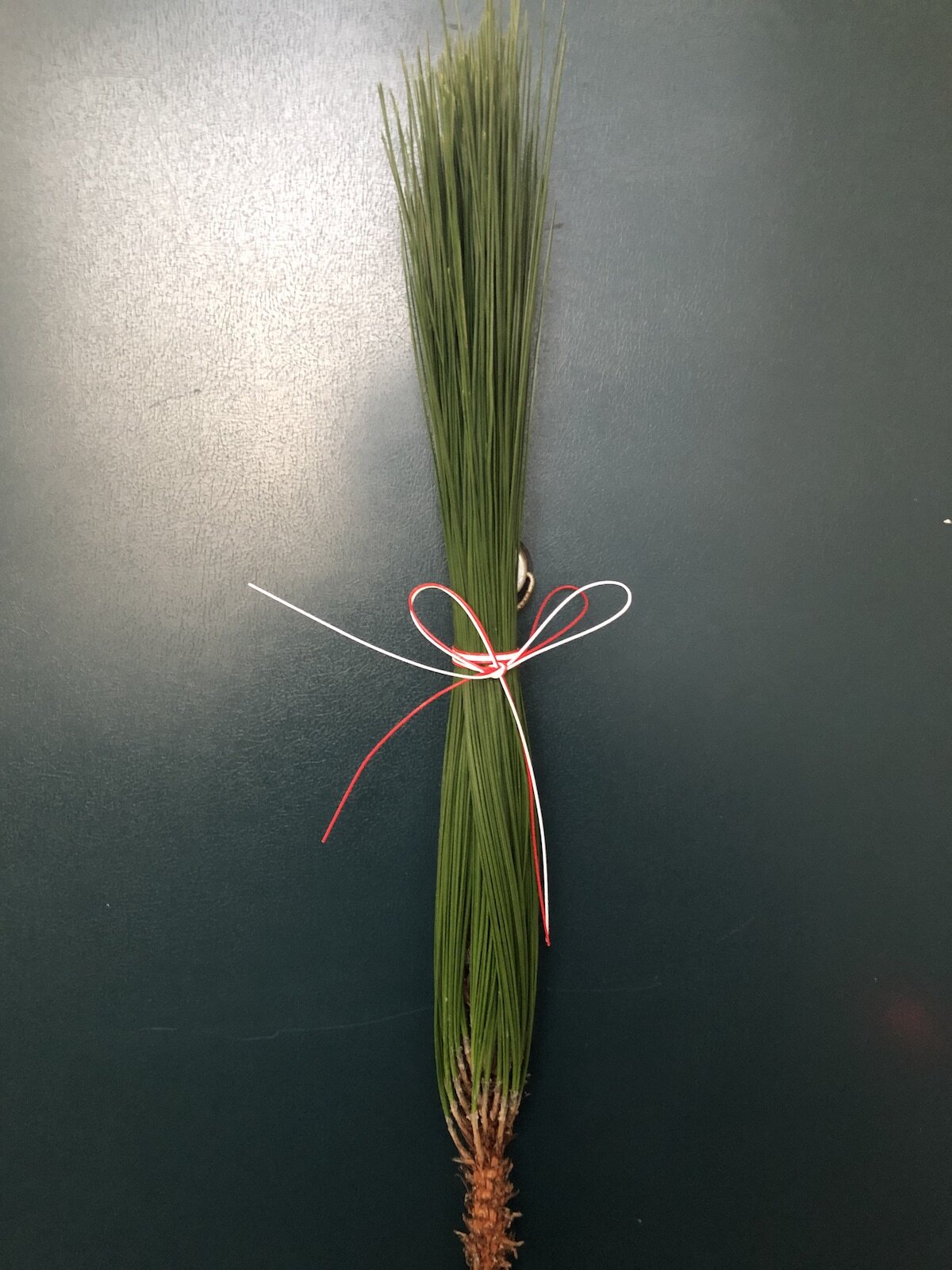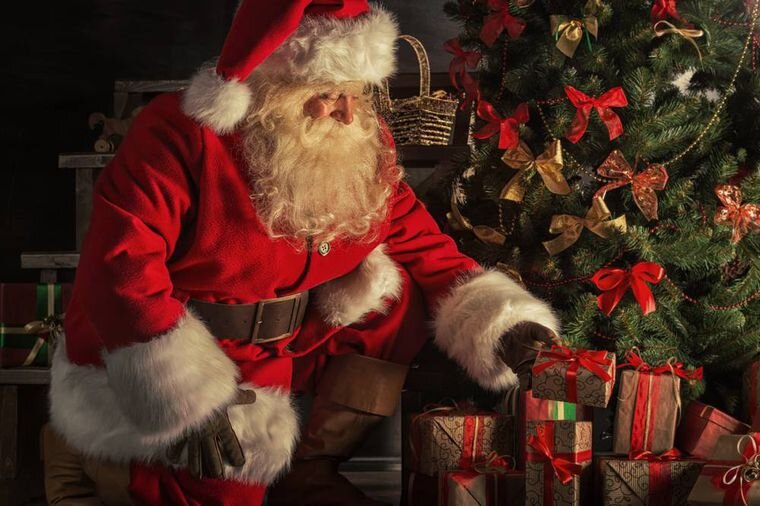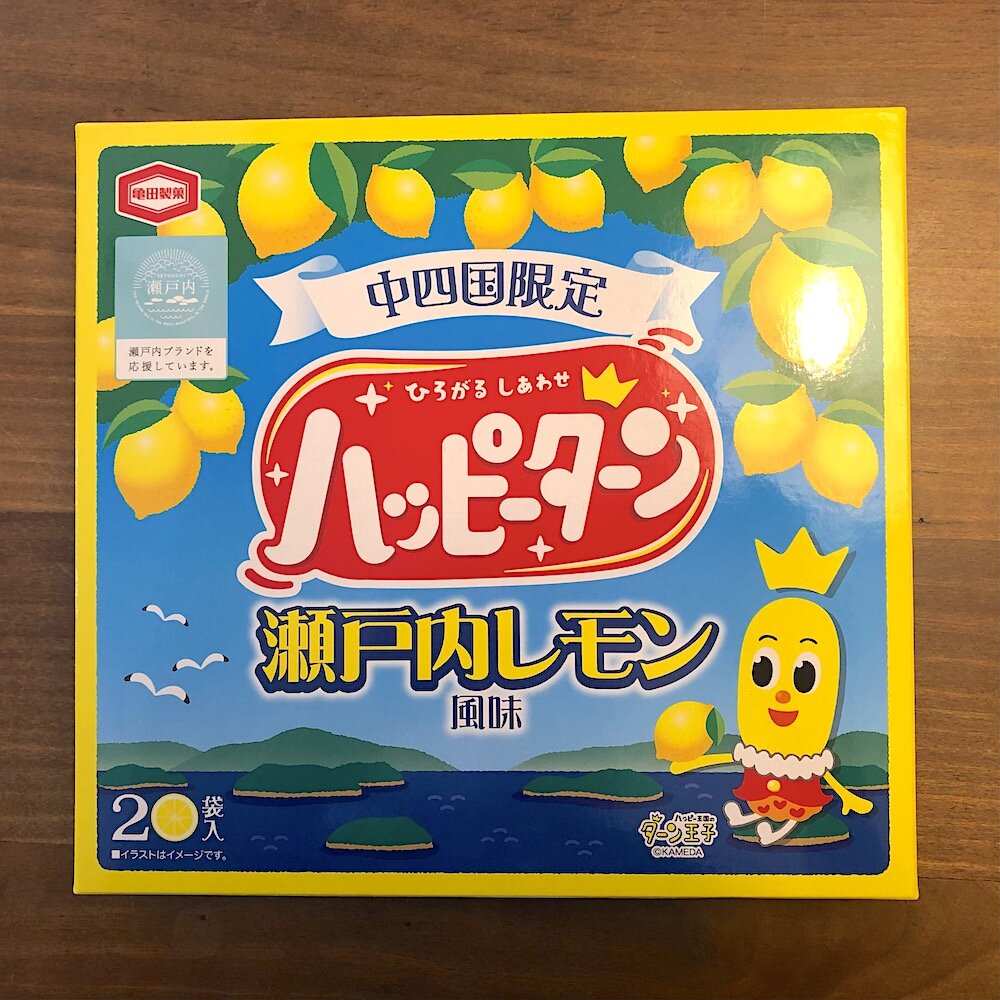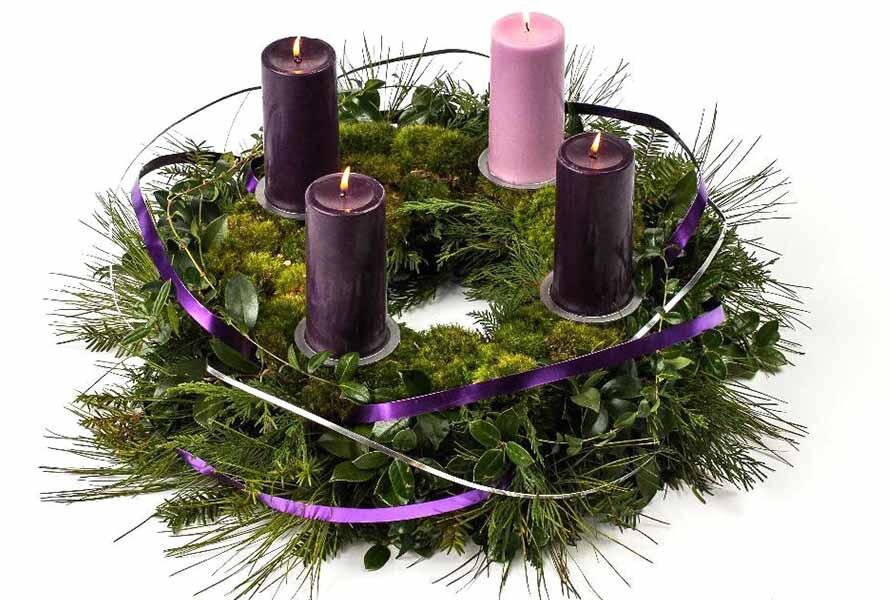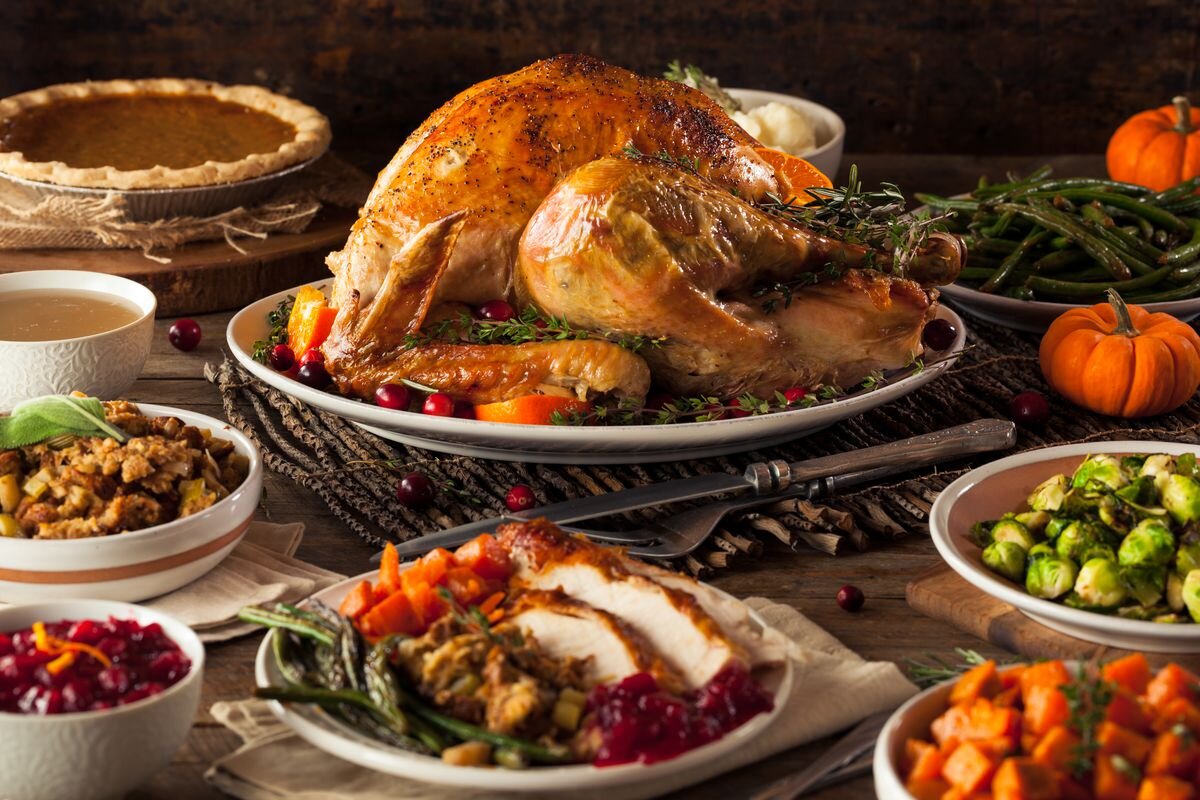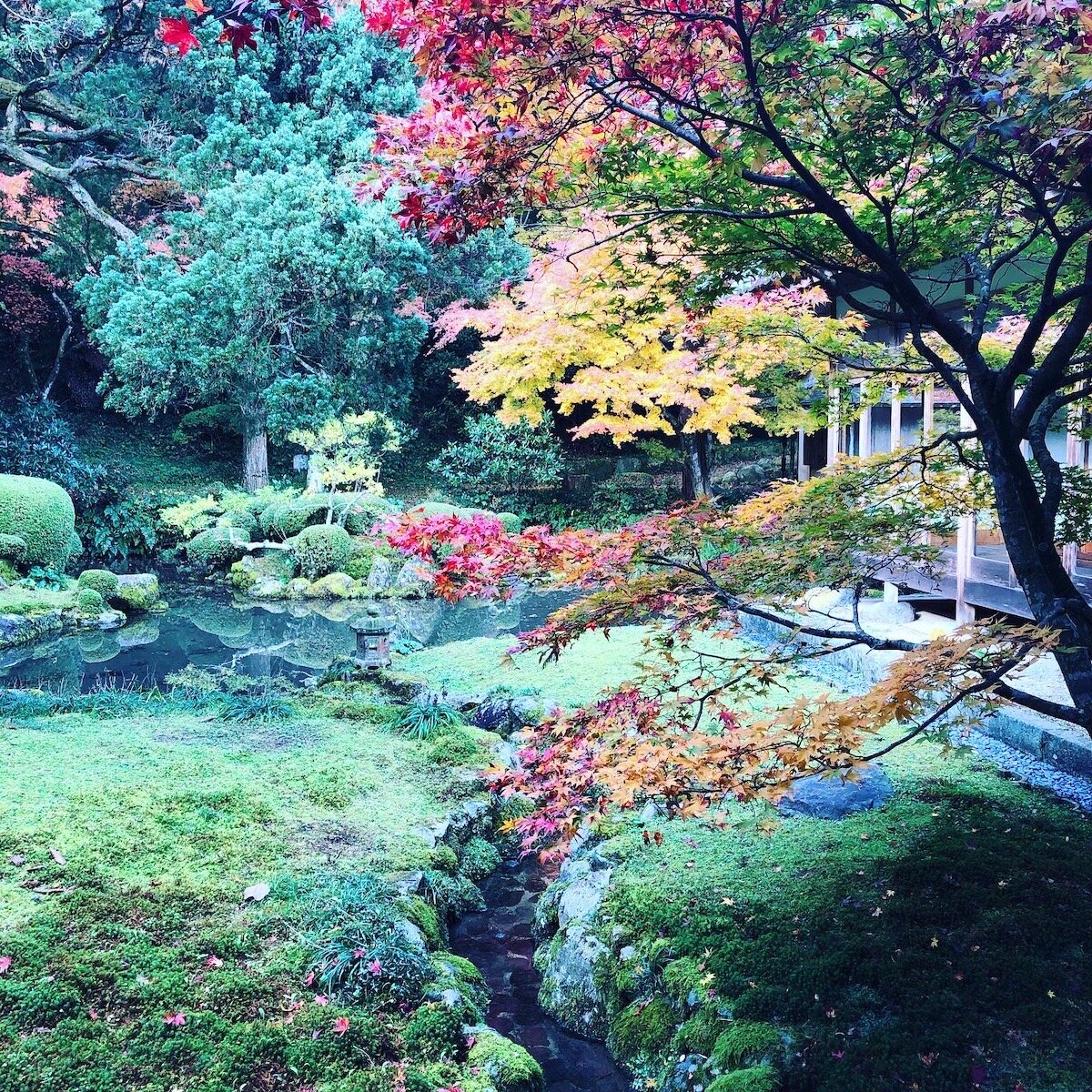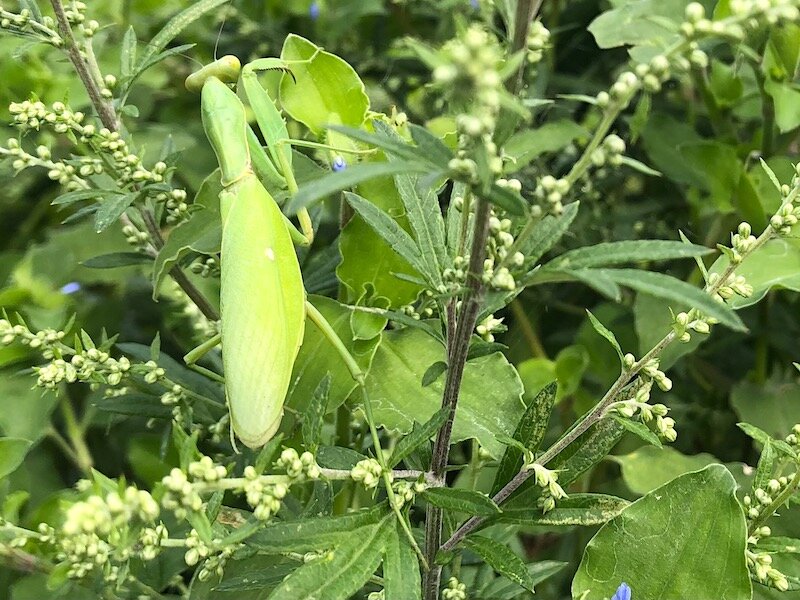ZOOM、教室での対面式レッスン、ご都合がいい方でご参加いただけます。
大雨の日、仕事が忙しい日、少し体調が良くない日、緊急事態宣言下などなど、ご都合に合わせて、ご自宅からお気軽にZOOMでご参加ください。
How do you like your mochi?
How do you like your o-mochi? Round or Rectangular? Grilled or Boiled?
The shape and preparation of o-mochi varies from region to region in Japan. In the East, it is rectangular and usually grilled. In the West it tends to be round. Half of Kyushu grills their round mochi, while those in the Kansai and Chugoku regions boil theirs.
My wife's family from Kagoshima grills their rectangular mochi in a toaster.
Kamiari-Shrine
お正月に糸島市にある
神在神社
へ行ってきました。
この神社の見所は、神石と言われる大きな岩!
パワーをたくさんいただきました。
参拝客が少なくおすすめです。
神在神社:福岡県糸島市神在801-1
Ringing in the New Year
I used to get so depressed after Christmas when I was young. In America, there really wasn’t much to look forward to once King of All Holidays had passed. We had Easter, of course, but you had to first eke your way through six weeks of Lent, which was no easy task in my devoutly Roman Catholic family.
After coming to Japan, though, I haven’t had that problem. Here, there is always something in the offing to look forward to: Ōmisoka, or New Year’s Eve; Gantan or New Year’s Day itself; the first seven or fifteen days of the New Year called Matsunouchi; the Tōka Ebisu Festival held around the 10th of January; Dondoyaki on the 15th; Setsubun at the beginning of February, and so on.
And so, to keep those Christmas Blues in check, we have made it a habit to decorate our home if not as lavishly, then just as festively for the New Year. That involves a trip to one of my favorite florists, Unpas. Every year they make the most wonderful shimenawa and mini kadomatsu.
This year, in keeping up with the muted mood of the times, we opted for a simple design.
We may add something to this pine branch to make it a bit more colorful.
A few days later, we went to the Yanagibashi Shōtengai market, which is always busy with people shopping for the New Year.
I think this may be the first time we have ever bought a real kagami-mochi. I think we may have started a new tradition.
What is a kagami mochi?
Let’s ask Mr. Wiki:
Kagami Mochi (鏡餅, "mirror rice cake"), is a traditional Japanese New Year decoration. It usually consists of two round mochi (rice cakes), the smaller placed atop the larger, and a daidai (a bitter orange) with an attached leaf on top. In addition, it may have a sheet of kombu and a skewer of dried persimmons under the mochi. It sits on a stand called a sanpō (三宝) over a sheet called a shihōbeni (四方紅), which is supposed to ward off fires from the house for the following years. Sheets of paper called gohei (御幣) folded into lightning shapes similarto those seen on sumo wrestler's belts are also attached.
The kagami mochi first appeared in the Muromachi Period (14th–16th century). The name kagami ("mirror") is said to have originated from its resemblance to an old-fashioned kind of round coppermirror, which also had a religious significance. The reason for it is not clear. Explanations include mochi being a food for special days, the spirit of the rice plant being found in the mochi, and the mochi being a food which gives strength.
The two mochi discs are variously said to symbolize the going and coming years, the human heart, "yin" and "yang", or the moon and the sun. The "daidai", whose name means "generations", is said to symbolize the continuation of a family from generation to generation.
News Eigo Jutsu
NHK’s ニュース英語術 is a great site to help you improve your reading ability, particularly when reading news stories.
Almost every weekday, one short article is uploaded. If you have trouble understanding the sentence, click on the arrow to reveal not only a translation of the sentence, but also grammar and vocabulary pointers.
Christmas in the US and Britain
You may think that just because Americans and the British speak the same language and share a connected history they must also celebrate Christmas the same way.
Well, actually, we don’t.
The customs and traditions are quite different, though, thanks to Hollywood movies and TV shows, the British Christmas is becoming more and more like America’s.
Setsubun 2021
Next year, Setsubun will fall on February 2 for the first time in 124 years. This will also be the first time in 37 years that the seasonal ritual is not February 3rd.
For more, go here:
https://eco.mtk.nao.ac.jp/koyomi/topics/html/topics2021_2.html
What's Santa's Name?
How many different names for Santa Claus can you think of? I come up with ten, many of which are just variation of Saint Nicholas or Father Christmas.
The following was taken from Busuu. You can read the entire article here.
What is Santa Claus’ real name?
The concept originated from Saint Nicholas, a patron saint famous for giving generous gifts to the poor. The pronunciation of Saint Nicholas in Dutch is Sinnterklaas, which is where the name Santa Claus came from. Spelling Sinterklaas as Santa Claus dates back about 200 years in New York.
10 different names for Santa Claus around the world
1. English: Santa Claus / Father Christmas
In the UK, US and Canada, “Santa Claus” or “Father Christmas” is believed to travel around the world sporting a red suit on his sleigh, pulled by reindeer.
He comes down the chimney the night before Christmas (between 24 and 25 December), leaving presents for children under the Christmas tree! Children often leave Christmas stockings by the fireplace that Santa can fill with small gifts and sweets.
Some families will leave a snack for him for his travels. In the UK, it’s common to leave a mince pie (a traditional festive pastry) and a glass of whisky / sherry for Santa, and a carrot for the reindeer! Americans leave cookies and milk.
2. American-English: Kris Kringle
In the US and Canada, some people call him Kris Kringle, which originates from the German word Christkind (Christ child).
3. French: Père Noël / Papa Noël (lit. Father Christmas / Daddy Christmas)
In France, it is Père Noël who delivers presents either on the eve of 23rd December, or on the morning of 25th December.
In the east of France, he is accompanied by Le Père Fouettard, a man dressed in black, who is said to punish the children if they misbehave.
3. Spanish: Papa Noel (lit. Father Christmas)
The man behind the Spanish name for Santa Claus is commonly known to give out presents on 24th December or 25th December (from Papa Noel), or on 6th January (from the Three Kings).
In South America, a family member often dresses up as Papa Noel and gives gifts to the children.
While in countries like Mexico and Venezuela, presents might also be brought by El Niñito Dios (baby Jesus) or Santo Clós (Santa Claus).
Santa is actually Spanish and means “saint”. The only problem is that Santa with an “a” is used for women, such as Santa Maria, Santa Barbara, Santa Clara. Men use “San” or “Santo”, as in San Francisco, San Diego, San Antonio, etc.
4. German: Weihnachtsmann (lit. Christmas man)
The festive season in Germany starts early, with Nikolaustag – St. Nicholas Day – on 6th December. It is thought that St. Nicholas comes in the night, and puts presents in the children’s shoes, which are usually polished (kids have got to get in Santa’s good books somehow!) and placed by their front doors the evening before.
In some parts of Germany, das Christkind (Christ child) is thought to bring children presents on Christmas Eve. Children also write to him asking for presents before Christmas. They even decorate their letters by gluing sugar to the envelope!
In other parts of the country, der Weihnachtsmann (Santa Claus) is the one who brings presents to the children. Traditionally, German people open their presents on Christmas Eve rather than Christmas Day.
5. Italian: Babbo Natale (lit. Daddy Christmas)
In Italy, Babbo Natale is thought to deliver presents at Christmas. Italian families start collecting presents at the start of December and they are opened either on Christmas Eve or on Christmas morning.
It is also believed that the witch, La Befana, arrives during the night of 5th January bringing smalls gifts, sweets and dried fruits which she leaves in the socks of the good children.
6. Portuguese: Papai Noel (lit. Father Christmas)
In some parts of Brazil, children leave a sock near a window. If Papai Noel finds their sock, he’ll exchange it for a present.
In Portugal, Santa Claus is called Pai Natal. He is believed to bring presents to children on Christmas Eve. Presents are left under the Christmas tree or in shoes by the fireplace.
In both countries, families will either open presents on the eve of the 24th after Midnight Mass or on Christmas morning.
7. Russian: Дед Мороз – Ded Moroz (lit. Grandfather Frost)
In Russia, Christmas is actually celebrated on 7th January, which is the Orthodox Christmas, and therefore goes by a different calendar. This is true for many Easter Orthodox Christian denominations, such as those in the Middle East.
However, people do also exchange presents on New Year’s Eve. It is believed that Ded Moroz (the Russian and interpretation of and name for Santa Claus) brings presents with the help of his granddaughter, Snegurka. The tradition goes that children make a circle around the Christmas tree and call for Ded Moroz and Snegurka. When they appear, the star and other lights on the Christmas tree light up.
8. Turkish: Noel Baba (lit. Father Christmas)
Christmas isn’t widely celebrated in Turkey, but some families celebrate popular Christmas traditions on New Year’s Eve. They might have a ‘New Year’s Eve tree’ and give gifts.
9. Polish: Święty Mikołaj (lit. Saint Nicholas)
In Poland, it is generally believed that Święty Mikołaj brings presents which are opened after the Christmas Eve supper is finished. Sometimes the adults tease the children by dragging out the meal so they have to wait longer for the presents!
In some parts of Poland, there are different traditions. In the east, presents are given by Dziadek Mróz (the same as Ded Moroz in Russia) and in western and northern Poland people believe that Gwiazdor (the starman) brings them.
Peacock Lane
Peacock Lane is a four-block street in southeast Portland, Oregon, in the United States. It is known for its elaborately decorated homes during the Christmas and holiday season. During this time of year, thousands of people come to view the displays, buy cocoa, take horsedrawn carriage rides, and sing. The street earned a listing on the National Register of Historic Places in 2017.
The tradition of decorating thehouses dates backto the 1920s. Since beginning, the event has occurred annually, except for a short interruption during World War II while the United States was rationing valuable resources, including electricity.
Many homeowners voluntarily pass along their decorations to new residents when they sell their properties. Homeowners are not obligated to put up any lights or displays, but most do.
Christmas Tree Farms
One thing I miss doing is going to Christmas tree farms and picking out a tree. These videos show what it is like.
Souvenirs
苺を使ったお菓子の専門店「AUDREY(オードリー)」のグレイシアを
お土産にいただきました!やったー!!!
東京都横浜でしか手に入りません。
女性に大人気のお菓子だそうです。見た目も可愛いですね。
苺の酸味がちょっぴり効いてて、とってもおいしかったです!
続きましては、飛騨の焼き栗きんとん
岐阜県産の栗を使っているそうです。
和菓子の甘さが、緑茶にぴったりのお菓子です。
美味しくて2個も食べちゃいました。
そして、
中国四国地方限定のハッピーターン「瀬戸内レモン味」です!
酸っぱいのかと思って食べてみたら…
美味しい!!!
絶妙な甘酸っぱさ!!!
何本でもいけます!
亀田製菓 → ハッピーターンスペシャルサイト
たくさんのお土産をありがとうございました!
The Seasons of Fukuoka Tower
Fukuoka Tower has really upped its illumination game in recent years.
Hakata Station Christmas Market
博多駅前のクリスマスツリーです!
今年は飾っていないお店も多いようなので貴重ですね。
Last week we went to the Christmas Market at Hakata Station. Have you been? (If no, check out the クリスマスマーケット link here.)
I was so happy that the event was able to be held this year. I was worried that it would be cancelled like so many other events have been (Oktoberfest, etc.) due to COVID-19. In Germany and elsewhere in Europe, most of the Christmas markets will not take place, but a few smaller markets will.
So, what are Christmas markets?
The markets generally open at the start of or a few weeks before Advent.
What's Advent, you ask?
Advent is 降臨節, 待降節〘クリスマス前の約4週間〙. The start and length of Advent changes from year to year, but as a rule it begins on the fourth Sunday before Christmas. This year it began on December 29th which is Advent Sunday (降臨節の第1日曜日).
アドベントという単語は「到来」を意味するラテン語Adventus(=アドベントゥス)から来たもので、「キリストの到来」のことである。ギリシア語の「エピファネイア(顕現)」と同義で、キリスト教においては、アドベントは人間世界へのキリストの到来、そして、キリストの再臨(ギリシア語のパルーシアに相当)を表現する語として用いられる。
Many homes have Advent Wreaths, a kind of table decoration with four candles in them.
アドベントには、ろうそくを4本用意し、第一主日に1本目のろうそくに火をともし、その後、第二、第三、第四と週を追うごとに火をともすろうそくを増やしていくという習慣がある。この習慣は、一説によると、ドイツ国内の伝道の祖といわれるJ・H・ヴィヒャーンが始めたもので、ハンブルクにある子供たちの施設「ラウエス・ハウス」(粗末な家)で初めて行われた。当時は、クリスマスまで、毎日1本ずつそうそくを灯したといわれる。そして1860年以後は、ベルリン・テーゲルの孤児院にもこれが広められた。 常緑樹の枝を丸くまとめ、装飾した「アドベントリース」または「アドベントクランツ」に、4本のろうそくを立てる、もしくはアドベント用に4本のろうそくが立てられる燭台を用いるのが普通である。クランツのモミの枝は降誕日を、4本のろうそくは待降節の4回の主日を意味している。クランツ(冠の意)は称賛や崇敬を表し、王たる存在のイエスを象徴している。 通常、ろうそくの色は白または典礼色に倣い紫であるが、第三週のガウデテ・サンデイのみはバラ色のろうそくを用いる場合が多い。なお、教会暦や風習に縛られない教会もある。また、家庭においてはろうそくの色は自由であり、実にさまざまなものが存在する。また、この時期の祈祷や賛美歌には、救世主の出現を待ち望むものが見られる。
When I was a child, I would get excited looking at the Advent Wreath. With each Sunday, a new candle would be lit and we would be one week closer to Christmas and presents and good food and . . .
Another way to count down the days until Christmas is with an Advent Calendar.
降臨節カレンダー〘子供用のカレンダーで小さな窓を開けるとクリスマスにちなんだ絵が見える〙. アドベントカレンダー (Advent calendar) は、 クリスマスまでの期間に日数を数えるために使用されるカレンダーである。待降節の期間(イエス・キリストの降誕を待ち望む期間)に窓を毎日ひとつずつ開けていくカレンダーである。すべての窓を開け終わるとクリスマスを迎えたことになる。
Have you ever bought one of these. In recent years they have become rather easy to find. My local supermarket was selling them yesterday, so I bought two for my sons. Most Advent Calendars contain chocolate, but some calendars for adults have bottles of beer or wine in them. L'Occitane sells a calendar that comes with a different beauty product for each day. I'm thinking of buying that for my wife.
As for the Christmas markets, these are actually called Christkindlmarkt in German. (Literally: Christ Child Market, but the term "Christkind" usually refers to an angel-like "spirit of Christmas" rather than literally the Christ Child). These are street markets associated with the celebration of Christmas during the four weeks of Advent.
クリスマスマーケットは、ドイツやオーストリアの都市の広場で行われるイベント。ドイツ圏ではほぼ全ての都市、小都市で行われる。夜が長く天気の悪い冬のドイツの呼び物として定着している。さらにはヨーロッパ全体、世界中の多数の国にも広まり、開催されている。通常、期間はアドベント(降臨節、待降節)の4週間である。 ドイツ語では、Weihnachtsmarkt(ヴァイナハツ・マルクト)と言うが、日本においては親しみやすい英語の「クリスマスマーケット」がよく用いられる。 大きなクリスマスマーケットでは、広場の中心に巨大なクリスマスピラミッドが設置され、この周囲でホットワインやホットチョコレートが売られる。 その周囲には日本の縁日のように、広場や通りに出店が並び、簡単な食事や土産物が売られる。中には台所用品など実用品も売る店もある。出店は日本のそれよりもずっと大きく、木造の家屋のような作りになっている。メリーゴーランドや観覧車なども設置される。ドイツの冬場は高緯度であることから、夜が長く天気が悪いので、華やかなライトアップがほどこされる。
At the Christmas Markets, you can buy traditional handmade Christmas decorations. The Christmas Market in Hakata Station has one of these shops. This year, though, the selection is rather limited. Probably due to the coronavirus. Most of the decorations are a bit expensive, but we try to buy one or two every year to add to our growing collection.
have also included a short documentary about stollen below. What's Stollen? シュトレン(独: Stollen)は、ドイツの菓子パン。オランダ語ではストル(蘭: stol)とされる。国内で広く認知されている表記の「シュトーレン」は、ドイツ語の発音としては正しくない。ドイツとオランダでは伝統的にクリスマスに食べる食品で、その時期に売られるものはクリスマスのシュトレン(独: Christstollen, Weihnachtsstollen、蘭: kerststol)と言う。
Thanksgiving Day
Last Thursday, November 26th, was Thanksgiving in the United States. What is Thanksgiving?
感謝祭は、イギリスからマサチューセッツ州のプリマス植民地に移住したピルグリム・ファーザーズの最初の収穫を記念する行事であると一般的に信じられている。ピルグリムがプリマスに到着した1620年の冬は大変厳しく、大勢の死者を出したが、翌年、近隣に居住していたインディアンのワンパノアグ族からトウモロコシなどの新大陸での作物の栽培知識の教授を得て生き延びられた。1621年の秋は、特に収穫が多かったので、ピルグリムファーザーズはワンパノアグ族を招待して、神の恵みに感謝して共にご馳走をいただいたことが始まりであるとされる。イギリス人の入植者もワンパノアグ族も秋の収穫を祝う伝統を持っていて、この年のこの出来事は特に感謝祭と位置づけられてはいなかった。プリマス植民地で最初に祝われた1623年の感謝祭は食事会というよりもどちらかというと教会で礼拝を行って、神に感謝を捧げる宗教的な意味合いが強かった。
By happy coincidence, Japan, too, celebrates a Thanksgiving Day of sorts, 勤労感謝の日. Most Japanese have no idea what that day is. But I do. And now you will, too.
日本では古くから、天皇が新穀などの収穫物を神々に供えて感謝し、自らも食する「新嘗祭にいなめさい」という祭事が行われてきた(詳細は新嘗祭を参照)。 新嘗祭は1872年(明治5年)までは旧暦11月の二回目の卯の日に行われていた。しかし、改暦の年である1873年(明治6年)になって、旧暦11月の二回目の卯の日は新暦の翌年1月に当たり都合が悪いということで新暦で行うこととなり、同年11月の二回目の卯の日であった11月23日に行われた。また、同年公布の年中祭日祝日ノ休暇日ヲ定ム(明治6年太政官第344号布告)[注釈 3]によって、祭祀と同名の休暇日(休日)となった。本来、11月の二回目の卯の日は11月13日 - 11月24日の間で変動するが、翌1874年(明治7年)以降も祭祀・休日ともに11月23日に固定した。
Today, I would like to introduce you to, one, the Thanksgiving Story that most American children learn, and, two, the true story behind Thanksgiving which isn't nearly as pleasant.
Shoten-ji
博多駅から10分ぐらい歩いたところにある承天寺は、うどん、蕎麦、饅頭、そして博多祇園山笠の発祥の地と言われています。
博多千年門 (別名:良かろう門)
天神から博多まで、ちょうどいいお散歩コースです
Ho, ho, ho, Green Giant!
The other day, I was talking to some students about my high school's annual food drive when I explained that we boys would go canvassing for canned veggies and . . . they all gave me an odd, quizzical look.
Canned vegetables? What are canned vegetables.
So, I googled it and showed them some photos of the kind of thing I was talking about. It was only then that it dawned on me that after all these years in Japan, I don't think I have eaten many vegetables that weren't fresh and/or in season.
Take spinach. Yes, please take it.
Growing up in 'Merica, spinach was a common side dish on many dinner plates, but I don't think I ever saw raw spinach until I came here. It had always been canned or frozen when I was a kid.
Another staple veggie is peas and carrots. I've never had this here. And I thank my lucky stars because of it.
Now, I often grumble that the selection of fruits and vegetables at my local supermarket leaves much to be desired. (I was looking at a wimpy, woebegone pomegranate at the supermarket yesterday that was selling for almost ten bucks and thought nope.) But, what you can find here is fresh, usually locally grown, and of high quality. If only I could find a lime that didn't cost two bucks.
Sennyo-ji
Some 15 years ago, my wife and I visited this temple deep in the mountains of Itoshima. We were the only visitors at the time and felt honored when the Buddhist priest on duty invited us into the Holy of Holies or Apse, so to speak, to give us an up-close view of the 1000-handed Kannon statue. As we knelt before it, he burnt incense and chanted a lengthy sutra.
It had been a hard year, but at the time things were looking up. Being prayed over, I couldn’t help feeling that we were experiencing a spiritual spring cleaning that swept all of the negativity of the past several months away. And when it was finished and we stepped down from the we emerged that sacred space, I felt as if a heavy burden I had been carrying had become lighter.
As we left, toes frostbite from the cold, but hearts warmed and filled with hope, I suggested coming again the following year. And we did, year after year until our first son was born and child rearing became all-consuming.
In the meantime, Japan changed. The world changed. There was no SNS or smartphones when we first visited. There were few inbound tourists, too.
Now, I don’t want to sound like a crusty old fart, but I prefer how things were then—little known, quiet, special . . . holy. Thanks to COVID-19, the crowds that had beeb overwhelming so many places known for their tranquil and sublime beauty are once again worth visiting. (That was how I felt when we visited Dazaifu last week, too.)
We may have missed the peak of Sennyoji’s autumnal beauty this time by a few days. But I couldn’t have been happier to see the temple as I remembered it.
And as we left, I suggested once again that we try to come again next year.
From Wiki:
Sennyo-ji (千如寺) is a Shingon temple in Itoshima, Fukuoka Prefecture, Japan. Its honorary sangō prefix is Sennyo-ji Daihiō-in (千如寺大悲王院). It is also referred to as Raizan Kannon (雷山観音).
According to the legend, Sennyo-ji was founded in the Nara period by Seiga, who came from India as a priest during the period.
Due to its position in the north overlooking the Sea of Genkai, it has been expected from the shogunate as a prayer temple of the foremost line against the Mongol invasions of Japan during the Kamakura period. In its heyday has been said to be lined up to 300 priest living quarters around the temple. Sennyo-ji is a general term of this temple, and it is also referred to as the priest's lodge that was located next to the middle sanctuary, the present day site of Ikazuchi-jinja. The wooden Avalokiteśvara statue is the subject of mountainous faith that has been enshrined in the main hall.
Afterwards the priest living quarters were ruined during the long war between Muromachi and Sengoku periods, there only remains the priest's lodge. In 1573, however, the main hall was founded by Kuroda Tsugutaka, the 6th feudal lord of Kuroda clan. Big maple trees, which has been designated as a natural monument of Fukuoka prefecture, has been said to be planted by him.
Taco Mia
レギュラーチキンブリトーに、
ワカモレとパクチーをトッピングで追加し、中に入れてもらうと
本場の味になります!
ぜひ百道浜に行かれた方は食べてください。
Itoshima
糸島にあるおじいちゃんの畑に行ってきました。
風がとても心地いいです。散歩日和です。
稲がしっかり実っています。
彼岸花の赤と稲の葉の緑、コントラストが美しいです。
カマキリ発見!
この時期ならではの大きさです。
バッタも大きく成長しています。
秋の虫取りは大物ばかりで取りがいがあり、楽しいです!
Kazaguruma
子供が小学校でお楽しみ会をするのでその景品に風車を作りました。
小学生、喜んでくれるかな?








